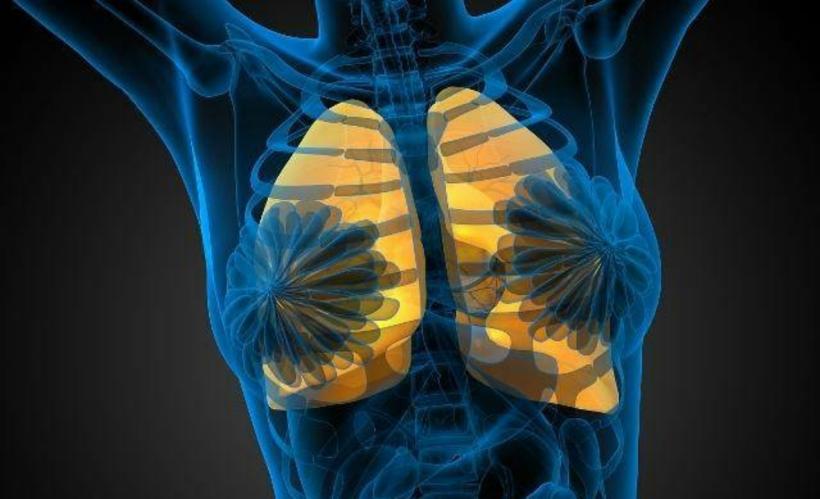Many tuberculosis patients and their families often have such questions: Why do tuberculosis patients need so many examinations in the ultrasound ? Why do other parts of the body also need to be scanned? Some may even suspect if the hospital is overdoing it. Today, let's discuss the unique diagnostic role of ultrasound in tuberculosis.
According to statistics, the annual growth rate of medical imaging data in China is 30%, while the annual growth rate of imaging doctors is only 4%. Taking CT reports as an example, radiologists need to complete 80-100 views per day. Simple CT image views may take a few minutes, while complex cases may take 30 minutes or more. Therefore, grassroots doctors in medical imaging are facing great work pressure.
The Elusive Mycobacterium Tuberculosis

Tuberculosis is a chronic infectious disease caused by Mycobacterium tuberculosis. It doesn't just affect the lungs; it can spread to various organs of the body through the bloodstream or lymphatic system, even infecting the digestive tract and causing retrograde infection of the reproductive system. Clinically, tuberculosis occurring outside the lungs is known as extrapulmonary tuberculosis, commonly including: lymph node tuberculosis, intestinal tuberculosis, bone tuberculosis, urinary system tuberculosis, gynecological tuberculosis, tuberculous meningitis, and neurological tuberculosis, among others. Even the skin, eyes, ears, nose, throat, and even the mouth can be infected by tuberculosis bacteria. This elusive mycobacterium tuberculosisis always on the move, seeking to spread.

The Necessity of Ultrasound Screening
Due to its elusive nature, many extrapulmonary tuberculosis cases do not present typical symptoms in the early stages, and cannot be localized based on medical cases and physical signs, as with most diseases. Therefore, ultrasound is often needed for screening, which doctors often refer to as "wide-range searching with targeted re-examination." In daily work, routine screenings are performed for the liver, gallbladder, pancreas, spleen, urinary system, and gynecology, as well as for fluid accumulation in the chest, abdomen, and pericardial cavity. Ultrasound is highly sensitive to small amounts of fluid and can accurately distinguish between encapsulated effusion and solid masses. For areas where a diagnosis has been clearly made, ultrasound can perform targeted scans for positioning, quantification, and qualitative diagnosis, and can also dynamically observe and continuously record during the diagnostic and treatment process. Ultrasound imaging plays an increasingly important role in clinical diagnosis and treatment decision-making.Miniaturized Ultrasound vs. Lung DiseasesInternationally, ultrasound diagnosis of lung diseases has become an important examination and monitoring treatment method, realizing the visualization of lung pathophysiology, so it is also hailed as a visual "stethoscope." During the years of the COVID-19 pandemic, ultrasound also played an indispensable role in the diagnosis and timely treatment evaluation critical lung diseases. Miniaturized ultrasound can be directly placed in isolation wards or carried in pockets. With the support of 4G and 5G networks, it can be used for remote consultation in specialized internet hospitals, so it may be more suitable for use in isolated medical areas.Senz’s new generation of AI miniaturized ultrasound products, based on integrated deep learning technology for intelligent assisted screening and diagnosis, satisfy the needs of grassroots screening and multi-scenario applications in clinical work. Its scanning navigation, lesion detection, and graphic reporting functions have greatly optimized the screening and diagnostic workflow in hospitals, clinics, and other scenarios, achieving "2-minute scan and 10-minute report" for intelligent screening. With the development of critical care medicine, miniaturized ultrasound has a guiding and differential diagnostic role in lung diseases, such as pleural thickening, peripulmonary lesions, pulmonary congestion, and edema, which can be detected in real-time to track disease progression. Due to its convenience, speed, no radiation harm, and ability for dynamic follow-up, it has been widely used in clinical practice and is favored by critical care departments.At the same time, we actively respond to the current trend of graded diagnosis and treatment, helping to improve the efficiency, service level, and quality of China's medical and health system, providing significant development significance to meet the diverse, multi-level, and low-cost medical and health needs of the people. Our miniaturized ultrasound devices not only simplify the operation process of ultrasound examination, breaking the bottleneck of traditional ultrasound examination, but also help release quality medical resources to benefit grassroots areas.
In the future, Senz will continue to actively respond to the national policy of "early screening, early diagnosis, and early treatment," providing reliable and trustworthy ultrasound screening technology tools for grassroots doctors as well as diagnostic reports for people. Through continuous innovation, study and development, we aim to make quality medical services accessible to everyone.






